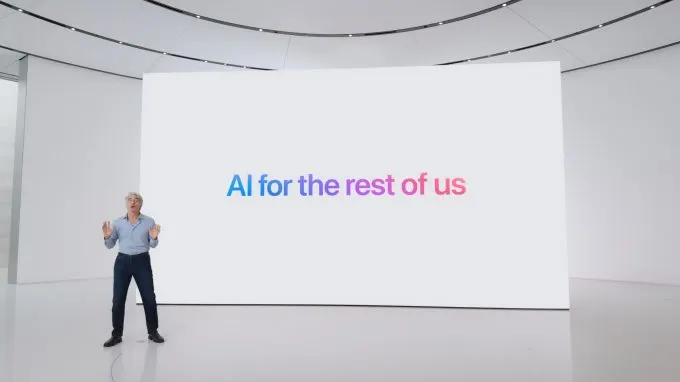At its 2024 WWDC event, Apple introduced its latest innovation, Apple Intelligence, a generative AI platform designed to enhance user experience across its product line. Amid fierce competition from AI initiatives by Google and OpenAI, Apple Intelligence adopts a pragmatic, integrated approach rather than creating a standalone app. The platform is expected to debut this fall on select Apple devices and includes functionality updates for apps like Mail, Messages, and Pages.
Apple Intelligence isn’t a single app but an integrated suite of features enhanced by a large language model (LLM). Users will notice new tools seamlessly embedded in popular applications, from text summarization to custom emoji creation. With its proprietary AI engine, Apple Intelligence aims to simplify tasks by enhancing user interactivity in a distinctly “Apple” style.
Enhanced Writing and Image Capabilities
One of the most notable features, Writing Tools, is a text generator that assists with everything from summarizing long passages to proofreading. It will be accessible in Mail, Messages, and Pages, allowing users to write and edit messages quickly. Apple’s custom emoji generator, known as Genmojis, is also set to make its debut. Users can generate personalized emojis and access Image Playground, a new app where they can create visual content to share across Apple’s ecosystem.
Siri’s New Role
Siri has been revamped as part of Apple Intelligence, with expanded functionality and smoother app integration. For instance, Siri can now edit a photo and insert it into a text message directly. New visual cues, such as a glowing light around the screen, signal Siri’s presence without disrupting the display. This evolution allows Siri to analyze content contextually, delivering timely and relevant answers and providing a more intuitive experience.
Who Will Get Apple Intelligence?
Apple Intelligence will be released in tandem with iOS 18 and Mac Sequoia this fall. Compatibility is limited to specific hardware models, including the iPhone 15 Pro and Pro Max, iPad Pro (M1 and later), MacBook Pro (M1 and later), and Mac Pro (M2 Ultra). The technology harnesses Apple’s custom chipsets, such as the A17 Pro and M1/M2, which allow for efficient processing on compatible devices.
Privacy and Cloud Computing
In a unique approach, Apple has focused on creating smaller, task-specific models, reducing resource demands and allowing most AI-driven actions to occur directly on the device. For more complex tasks, however, Apple will deploy Private Cloud Compute, a cloud service powered by Apple Silicon. This enables intensive AI tasks to run remotely while maintaining Apple’s emphasis on data privacy. Actions switch seamlessly between local and cloud processing, with minimal user disruption.
Third-Party Integrations and Partnerships
Apple Intelligence will also support third-party app integration. While previous reports speculated a deeper collaboration with OpenAI, the partnership is currently limited, allowing Apple users to access ChatGPT’s tools as an optional extension. Apple Intelligence is free to use, but premium features on platforms like ChatGPT will remain exclusive to paying subscribers. Google’s AI model, Gemini, is also reportedly a candidate for future integration, expanding Apple’s generative AI capabilities.
What’s Next for Apple Intelligence?
Apple Intelligence has stirred significant anticipation, with public beta testing underway and a full release expected later in 2024. Although some features are still in development, Apple’s comprehensive, privacy-focused approach aims to redefine how users interact with technology across devices. For now, the company’s ongoing partnership discussions and innovative AI integrations suggest that Apple Intelligence could be a long-term strategy rather than a passing trend in the world of generative AI.





